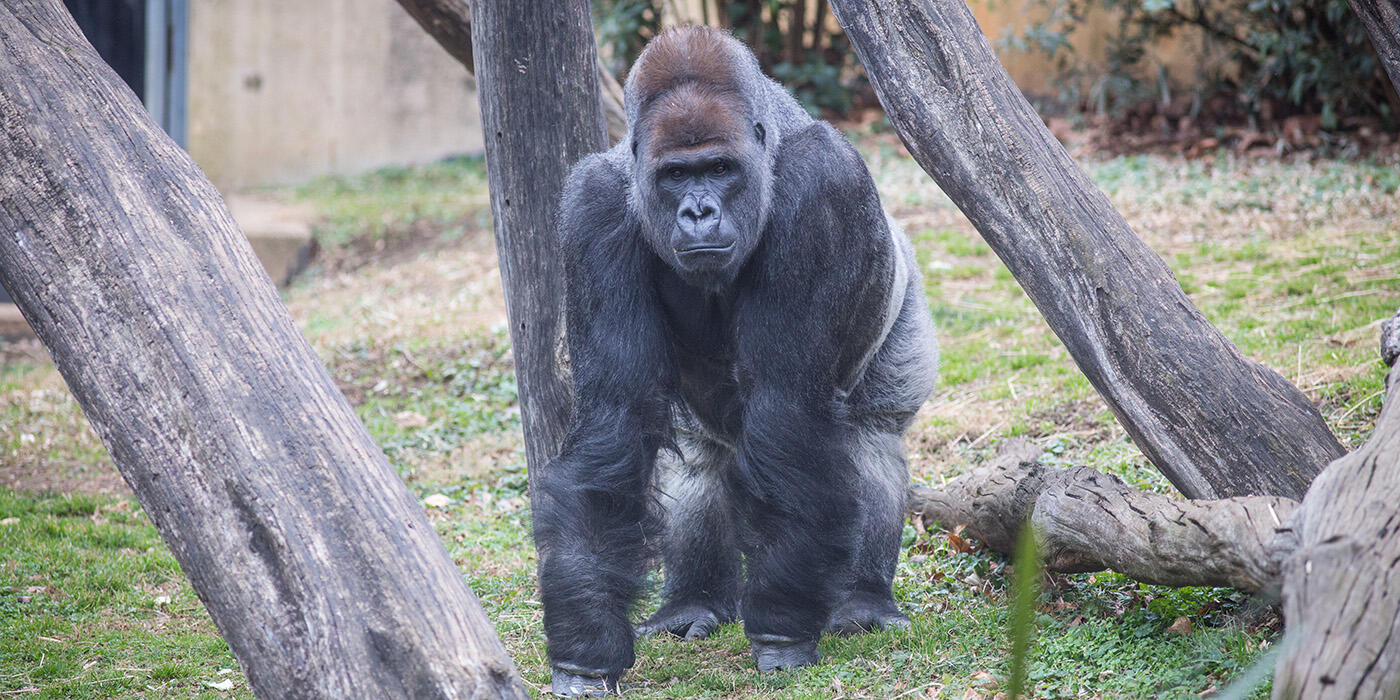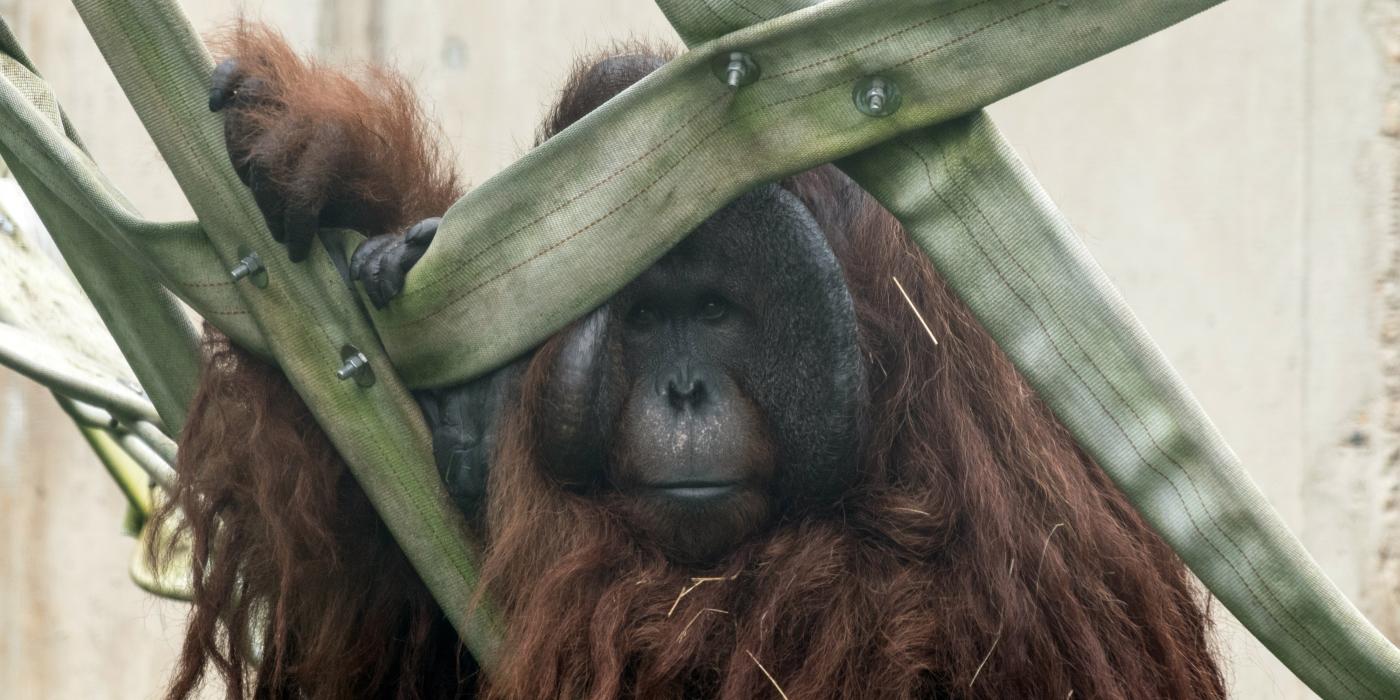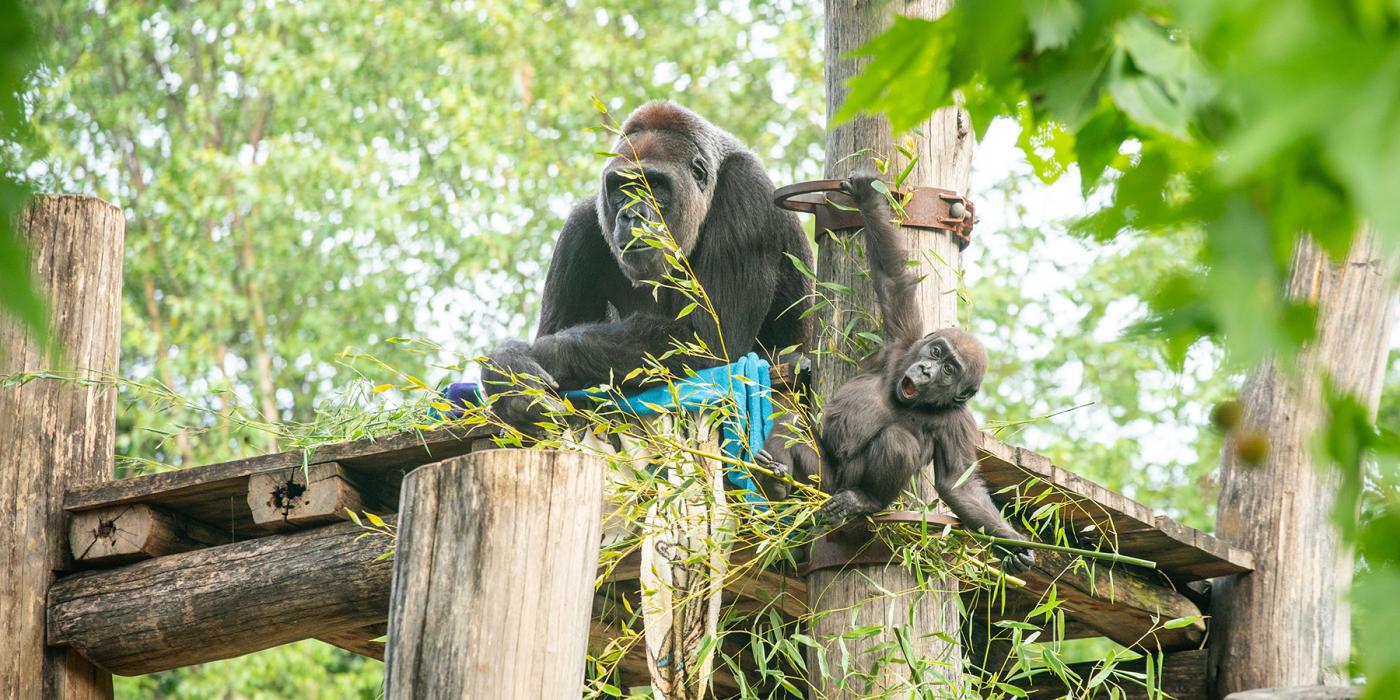#GorillaStory: Musical Moke

This update was written by primate keeper Melba Brown.
Tomorrow, our western lowland gorilla infant Moke will turn eight months old! He has come such a long way from when he was first born. When he was younger, he would vocalize loudly and flail about when he wanted something and did not get his way. Now, he is much more self-assured and will initiate interactions with the other members of his troop. Physically, he is heartier as well. Whenever he falls or gets pushed, tossed about, or fussed at, he takes it all in stride.
Related Species:



